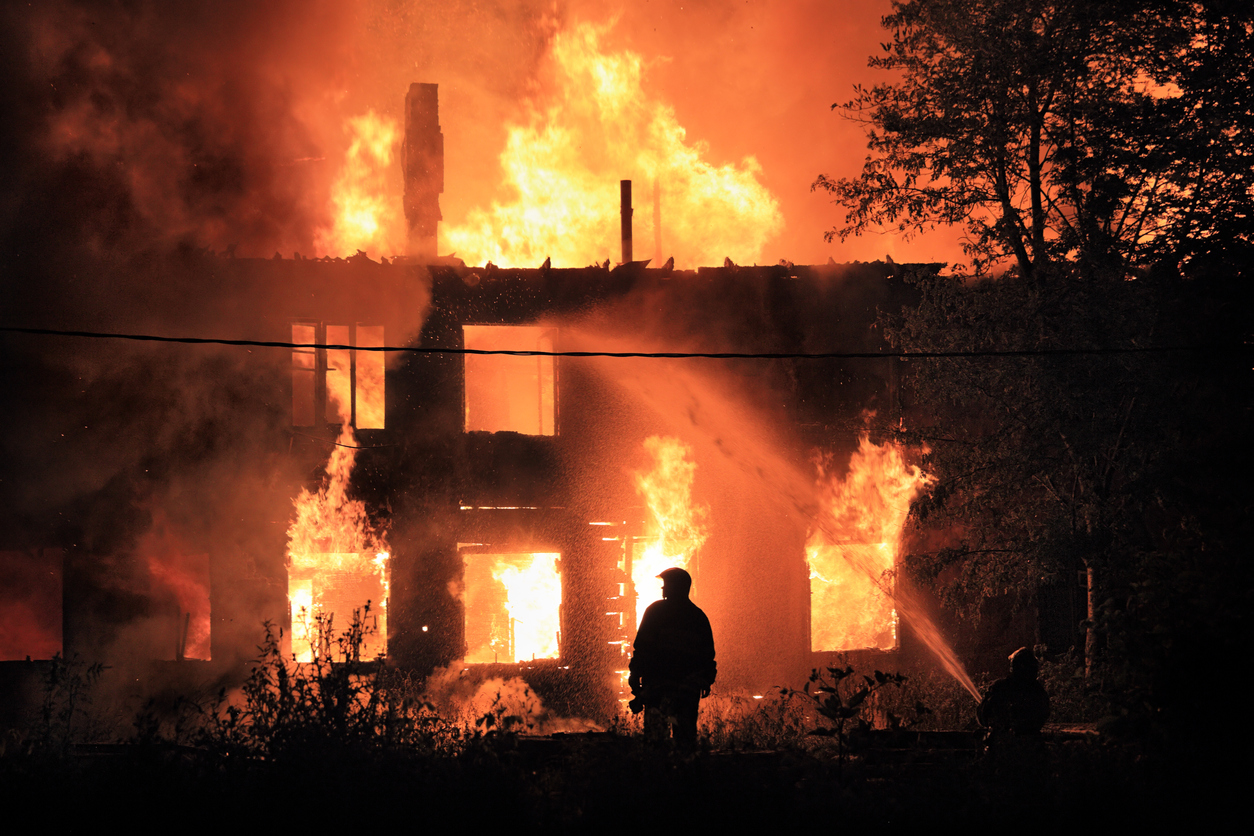"This can't be happening," Mr. Jones, who had spent years fighting wildfires, recalled thinking. "Wildfires do not strike Louisville, Colorado."
The 6,067-acre Marshall Fire destroyed nearly 1,000 homes in Louisville and nearby Superior, suburban communities that officials had long regarded as safe due to their distance from the mountains where wildfires typically burn. The Dec. 30 blaze, on the other hand, spread quickly and unexpectedly, as powerful winds rained down embers on subdivisions that had never been burned before.
Wildfires sparked by embers pose a growing threat to cities like Louisville that aren't directly adjacent to historically fire-prone areas blanketed with forest and brush in the American West. The region's historic drought, exacerbated in part by climate change, is creating conditions in which embers burn hotter, travel farther, and easily ignite parched land.
Boulder County, located less than 30 miles northwest of Denver, already has some of the most robust fire-protection plans in the state for its foothills and mountain towns. Officials admit, however, that they never considered a wildfire spreading to suburban communities on the plains below.
"This fire is definitely a game changer for us," Seth McKinney, fire-management officer for the Boulder County Sheriff's Office, said.
"It redefines what we think of as the wildland-urban interface," he added, referring to areas where development meets nature, which fire researchers have long believed pose the greatest risk of wildfire danger.
According to Boulder County Sheriff Joe Pelle, authorities are still investigating the cause of the Marshall Fire, which forced tens of thousands to evacuate and has left two people missing.
According to researchers and local officials, the area's drought played a role. According to the Colorado Climate Center at Colorado State University, Denver experienced its driest and warmest period between June 1 and December 29—the day before the fire—since 1933. This was the result of an unusually wet spring, which produced a bumper crop of tall prairie grasses, which provided fuel for the fire.
Winds of up to 100 mph flung embers for miles, according to Dan Dallas, a U.S. Forest Service supervisor and incident commander on the fire.
Some landed in subdivisions in Louisville and Superior, a suburban city and town of 21,000 and 13,000 people, respectively, where homes caught fire and spread to other homes.
A similar ember storm sparked by the Tubbs Fire in 2017 wiped out much of the community of Coffey Park in Santa Rosa, California, after jumping freeway lanes. In 2011, embers from a large wildfire in Bastrop County, Texas, aided in the propagation of flames for miles, destroying over 1,600 homes.
According to officials, the growing risk posed by embers poses a particular threat to areas that were previously thought to be safely removed from designated fire-risk zones. In addition to easily igniting dry land, embers are growing larger and hotter. Large wildfires, which are more common, also produce smoke columns, which carry embers farther than they have in the past.
"Nowhere is safe from fire, especially in the West, where you combine grasslands and chaparral with enduring drought," said Char Miller, an environmental analysis professor at Pomona College in Claremont, Calif.
Fire officials in Boulder County spent years developing mitigation strategies, such as requiring new developments in fire-prone areas to develop their own wildfire-protection plans.
However, the efforts were concentrated primarily in mountain towns and the foothills.
According to Mr. McKinney, the county's fire-management officer, the county released fire-hazard maps last year that showed the risk to local homes from wildfires decreasing significantly once fire reached the plains around Louisville and Superior.
According to fire experts, communities affected by the Marshall Fire will need to take many of the same precautions as their mountain counterparts, such as installing ember guards on rooftops and clearing flammable materials away from homes.
"What this event does is reinforce the need for us to address how we build for wildfires in the same way we do for hurricanes," said Roy Wright, CEO of the Insurance Institute for Business and Home Safety, an industry research group. "Just as we assume for hurricanes that high winds will extend inland, we must assume for wildfires that once ignited, those forces can extend miles into communities."
Until last week, many residents in Marshall Fire-ravaged neighborhoods were unconcerned about the wildfires reaching their front doors. Shelagh Turner, a 64-year-old retired teacher, had returned home from running errands on Thursday morning when a neighbor frantically told her she had 15 minutes to get out. Ms. Turner, who has lived in the same two-story, wood-frame home in Louisville for the past 27 years, was taken aback.
She had never evacuated before, so she called her daughters and asked them to look up what she should bring. She grabbed her important documents and some clothes before hurriedly loading her skis into her Subaru. She claimed that the 25-minute drive to one of her daughters' homes took three hours because the roads were clogged with fleeing cars.
When Ms. Turner returned to her neighborhood, she discovered a blackened heap of rubble where her house had once stood. Her mailbox and a plant pot she'd had for 20 years, in which she put flowers every spring, were among the few items that survived.
"Never in a million years did I expect anything like this," Ms. Turner said. "I'd always assumed I'd be safe."













